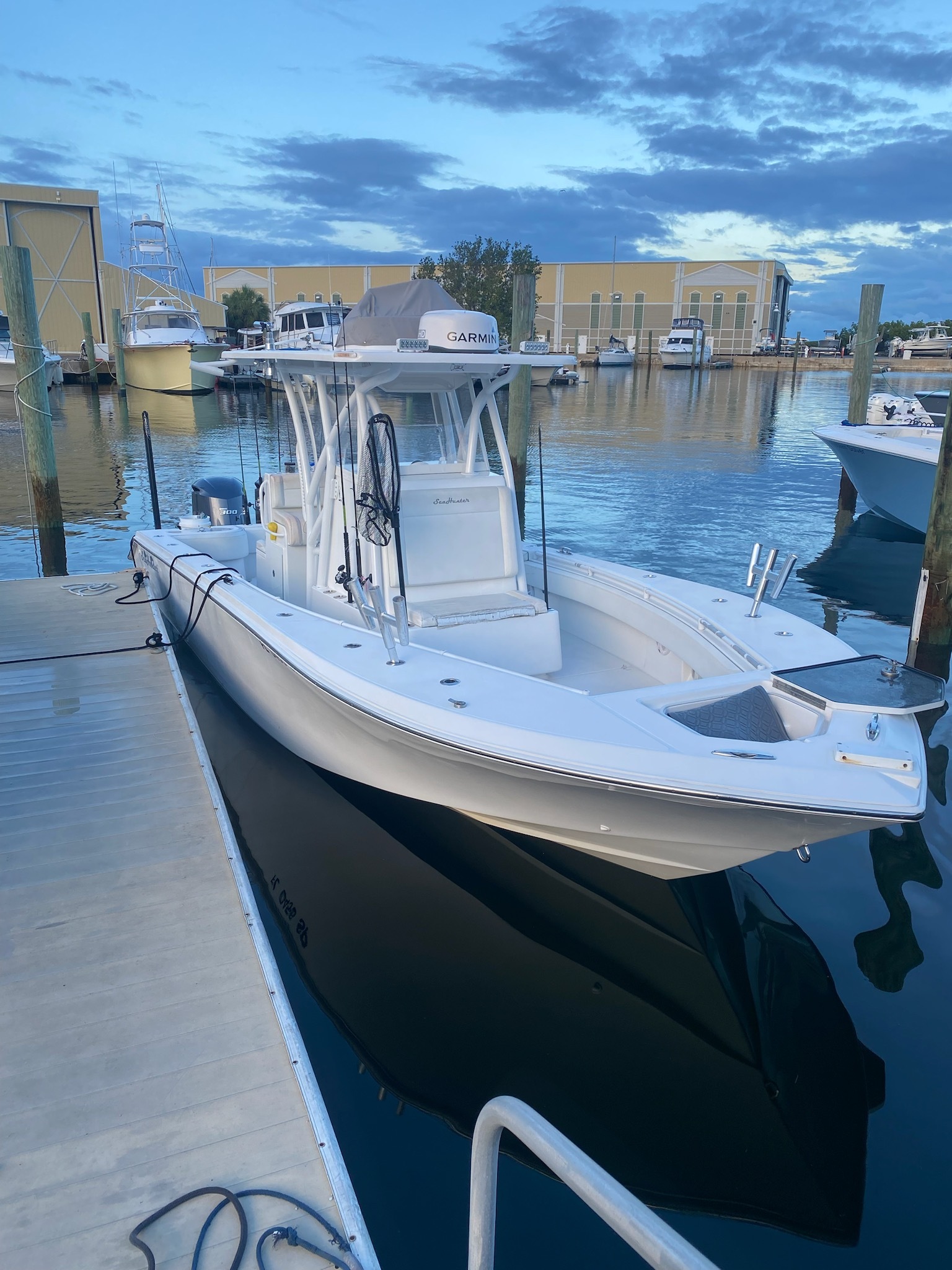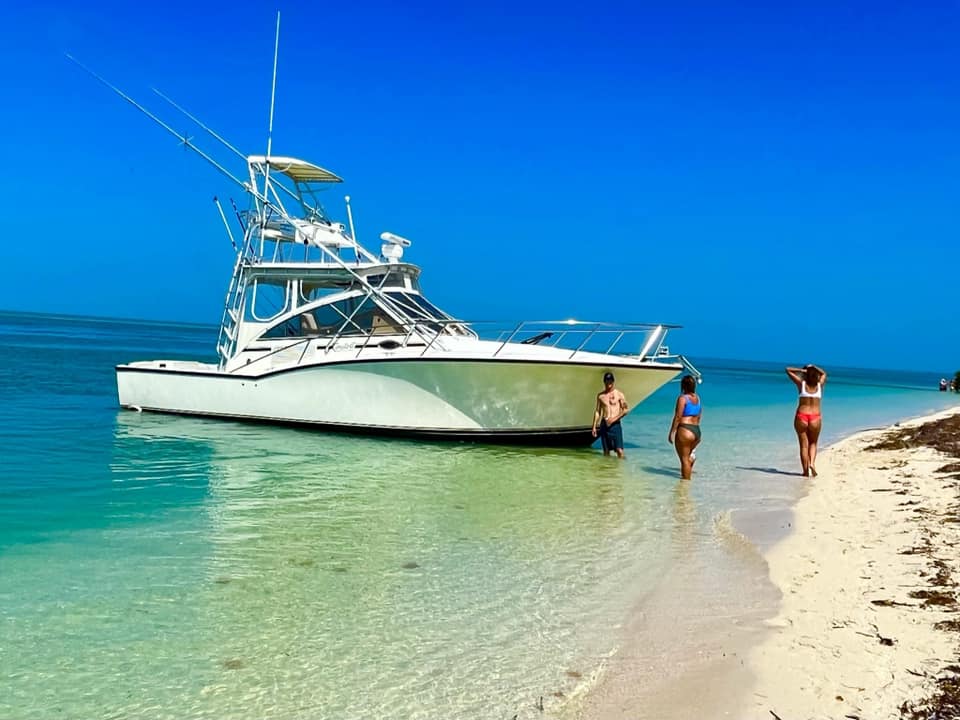Damn Good Guides
Experts Available 24/7
100% Weather Guarantee
Recently Booked Jetty Fishing Charters In Dry Tortugas
Deep Sea, Nearshore, Jetty in Key West
Ultimate Action Fishing In Key West
Top Species for Jetty Fishing in Dry Tortugas
“Our Damn Good Guides go above and beyond, and we’ve handpicked every single one. We’re passionate about the outdoors and look forward to getting you out on the trip of a lifetime, every time.”
Jonathan and Attison | Co-founders | Austin, Texas
Other Captain Experiences Trips in Dry Tortugas
Deep Sea, Nearshore Fishing in Key West
Dry Tortugas Expedition
Runnin' The Dry Tortugas
Dry Tortugas Smash
Dry Tortugas Trip
Deep Sea, Nearshore Fishing in Key West
Dry Tortugas Fishing Trip
Inshore, Deep Sea, Nearshore in Key West
Hidden Gems Of The Dry Tortugas
Need a Place to Stay?
Everything to Know About Booking a Dry Tortugas jetty fishing charter
What are the best jetty fishing charters in Dry Tortugas?
The best jetty fishing charters in Dry Tortugas are:
What is jetty fishing in Dry Tortugas all about?
Jetty fishing in the Dry Tortugas provides a unique and rewarding experience for anglers, thanks to the area's remote location and diverse marine ecosystem. The jetties in this region, often found around the harbor and protective structures of the islands, attract a wide range of fish species. These structures create an ideal environment for fish such as snook, redfish, and grouper, which seek shelter and food near the rocks and pilings. The clear waters and relatively unspoiled conditions of the Dry Tortugas make it a prime spot for experiencing productive and enjoyable jetty fishing.
One of the notable techniques for jetty fishing in the Dry Tortugas is using live bait, such as shrimp or small fish, which can be effective in enticing species like snook and redfish. Casting live bait close to the jetty's structure allows it to drift naturally, mimicking the movement of prey. This method takes advantage of the fish's natural instincts to hunt around the jetty's protective areas, increasing the chances of a successful catch. The relatively calm waters around the jetties in the Dry Tortugas make this technique particularly enjoyable and effective.
Additionally, anglers targeting the Dry Tortugas' jetties can benefit from using artificial lures to attract species such as mackerel and jacks. These predatory fish are drawn to the fast-moving lures that simulate the action of small baitfish. Experimenting with different colors, sizes, and retrieval speeds of lures can help match the local forage and provoke strikes. The abundance of fish around the jetties and the beautiful backdrop of the Dry Tortugas enhance the overall fishing experience, making it a memorable destination for jetty fishing enthusiasts.
What are the most popular months to go jetty fishing in Dry Tortugas?
Jetty fishing in the Dry Tortugas varies throughout the year, with different species becoming more active depending on the season. During the spring and early summer, the warmer waters attract a range of fish to the jetties. This is an excellent time for targeting species such as snook and redfish, which move closer to the structure in search of food. The pleasant weather and clear waters of spring make it a popular period for anglers, offering good visibility and productive fishing conditions around the jetties.
As summer progresses into fall, the fishing at the Dry Tortugas' jetties remains strong, with an increase in the presence of pelagic species. Mackerel and jacks become more prominent during this time, taking advantage of the abundant baitfish in the area. This season is ideal for using artificial lures to mimic the movement of these small fish, attracting the larger predators. The warm weather continues to make the fishing experience enjoyable, though it's wise to be prepared for occasional weather changes that can occur during hurricane season.
In the cooler months of winter, jetty fishing in the Dry Tortugas can still be productive but requires some adjustments. Species like sheepshead and black drum become more active around the jetties during this period. These fish are often found feeding on crustaceans and can be targeted using live or cut bait. The cooler temperatures might slow down some species' activity, but patience and precise bait presentation can still yield impressive catches. Winter fishing often brings fewer crowds, allowing for a more peaceful and focused fishing experience amidst the beautiful surroundings of the Dry Tortugas.
What techniques are popular for jetty fishing in Dry Tortugas?
Jetty fishing in the Dry Tortugas offers a variety of techniques suited to the unique conditions and diverse marine life around the jetties. One effective method is using live bait, such as shrimp or small baitfish, which can be cast near the structure of the jetties. This technique is particularly useful for targeting species like snook and redfish, which are drawn to the shelter and food sources provided by the jetties. The live bait should be presented in a natural manner, allowing it to drift and move with the current to attract these predator fish.
Bottom fishing is another popular technique at the Dry Tortugas' jetties, especially for targeting species like sheepshead and black drum. This involves using heavier rigs and bait, such as fiddler crabs or cut bait, to reach the seafloor where these bottom-dwelling fish are found. Positioning the bait near the rocky structures or pilings of the jetties can increase the chances of a successful catch. This method requires some patience and careful handling to avoid snags, but it can yield rewarding results for those targeting these species.
Additionally, artificial lures play a significant role in jetty fishing, particularly for attracting more active predators like mackerel and jacks. Using lures that mimic the appearance and movement of small fish can be highly effective. Techniques such as casting and retrieving lures at varying speeds can help match the local baitfish and provoke strikes. The diversity of lures available allows anglers to experiment and find the right presentation that entices fish in the dynamic environment of the Dry Tortugas' jetties. Each technique offers its own set of challenges and rewards, enhancing the overall fishing experience in this stunning location.
What species are popular for jetty fishing in Dry Tortugas?
When jetty fishing in the Dry Tortugas, anglers can target a diverse range of species that are attracted to the structure and shelter provided by the jetties. One of the primary targets is the snook, which thrives around the pilings and rocky areas. Snook are known for their powerful runs and strong, challenging fights, making them a popular choice among anglers. They are particularly active during the warmer months when they are drawn to the abundant food sources near the jetties.
Redfish, or red drum, are another sought-after species when fishing from the jetties in the Dry Tortugas. These fish are often found in the shadowed areas of the jetty, where they feed on crabs and smaller baitfish. Redfish can be targeted effectively using live or cut bait, and they provide a rewarding catch with their distinctive appearance and vigorous fights. Their presence around the jetties makes them a common and enjoyable target for jetty fishermen.
In addition to snook and redfish, jetty fishing in the Dry Tortugas can yield species like sheepshead and black drum. Sheepshead are known for their distinctive striped pattern and are often found feeding on crustaceans around the jetty's structure. Black drum, which are hearty fighters and good table fare, are also attracted to the rocky areas and can be targeted using similar bait. Each species offers its own unique challenge and reward, contributing to a varied and exciting fishing experience at the Dry Tortugas' jetties.
Recent Reviews
Featured Cities
- Fishing Charters Near Me
- Austin Fishing Guides
- Biloxi Fishing Charters
- Bradenton Fishing Charters
- Cabo San Lucas Fishing Charters
- Cancun Fishing Charters
- Cape Coral Fishing Charters
- Charleston Fishing Charters
- Clearwater Fishing Charters
- Corpus Christi Fishing Charters
- Crystal River Fishing Charters
- Dauphin Island Fishing Charters
- Daytona Beach Fishing Charters
- Destin Fishing Charters
- Fort Lauderdale Fishing Charters
- Fort Myers Fishing Charters
- Fort Walton Beach Fishing Charters
- Galveston Fishing Charters
- Gulf Shores Fishing Charters
- Hatteras Fishing Charters
- Hilton Head Fishing Charters
- Islamorada Fishing Charters
- Jacksonville Fishing Charters
- Jupiter Fishing Charters
- Key Largo Fishing Charters
- Key West Fishing Charters
- Kona Fishing Charters
- Lakeside Marblehead Fishing Charters
- Marathon Fishing Charters
- Marco Island Fishing Charters
- Miami Fishing Charters
- Montauk Fishing Charters
- Morehead City Fishing Charters
- Naples Fishing Charters
- New Orleans Fishing Charters
- New Smyrna Beach Fishing Charters
- Ocean City Fishing Charters
- Orange Beach Fishing Charters
- Panama City Beach Fishing Charters
- Pensacola Fishing Charters
- Pompano Beach Fishing Charters
- Port Aransas Fishing Charters
- Port Orange Fishing Charters
- Rockport Fishing Charters
- San Diego Fishing Charters
- San Juan Fishing Charters
- Sarasota Fishing Charters
- South Padre Island Fishing Charters
- St. Augustine Fishing Charters
- St. Petersburg Fishing Charters
- Tampa Fishing Charters
- Tarpon Springs Fishing Charters
- Venice Fishing Charters
- Virginia Beach Fishing Charters
- West Palm Beach Fishing Charters
- Wilmington Fishing Charters
- Wrightsville Beach Fishing Charters
Didn't Find What You Were Looking For?
Our guides are Damn Good Guides, which means they’re vetted by our team of outdoor experts who know them on a first-name basis. We hand pick each and every one of them, and our network spans all across the US and beyond.
The proof is in the pudding, and we’re incredibly proud of our 4.9 / 5 average review score. Hit the button below to see more trip options:



























